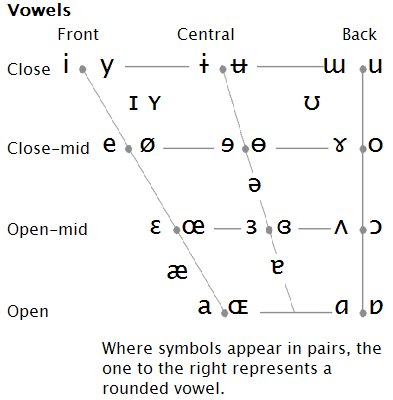Many scholars have studied language as a physical phenomenon. We know intuitively how to articulate the sounds of our native language. It is not something we need to think about too much, but an automatic process. However, when it comes to learning a new language, it may be useful to have a closer look at how we pronounce and articulate sounds when speaking. This article is just a brief overview of the articulation of sounds.
Generally speaking, language is produced by modifying the asset of our vocal tract when the airstream coming from the lungs resonates through the larynx and ends up in the oral cavity or the nose to produce a sound. When such airstream does not encounter any significant interference, we pronounce vowels. When the vocal organs create interference, then we produce consonants. Whatever the language, you could easily notice the difference by pronouncing any vowel
VOWELS
The pronunciation of vowels depends on the combination of three criteria:
a) The position of the tongue: whether the tongue is in a front, central or back position
b) The height of the tongue: the tongue is in a range from low (or open) to high (or close) position; for instance, the pronunciation of the
/i/ sound of the word
"speed" in English is higher and on the contrary the
/a/ sound of
"calm" is lower.
c) Lip rounding: just think about the difference between
/o/ and
/i/, the former being rounded and the latter unrounded.
Scholars created a quadrangle of the vowel sounds. This quadrangle is a reversed trapezium that represents a section of the oral cavity with the position of the tongue for each vowel sound of a language according to the three criteria described above. You can find an image on the website of the International Phonetic Alphabet website, see the link
HERE.
CONSONANTS
The pronunciation of consonants depends on a specific point where the sound is articulated, and the degree of constriction of the organs involved.
For example, think about the sound
/p/ in a random English word like
“pepper”. If you try to pronounce it, you can feel that both lips (which are the point of articulation of
/p/) are closed together and the airstream is closed and then released.
A lesser degree of constriction is the case of
/f/ sound as in the English word
“flower”. You could feel that the pronunciation of this sound involves the upper teeth and the lower lips (which are the point of articulation of
/f/) and the airstream flows through a so-to-say turbulent opening.
These are only two examples but many could be given; in this article, I am not trying to give a full account of phonetics or describe many technicalities in detail. This article is just a brief description that could help you notice how you articulate the sounds you know, and might perhaps give you a better understanding of those you don’t yet …
:)Let me know if you found this article useful for language learning, or if you are interested in having more details in the comments below! 

 August 2016
August 2016














































